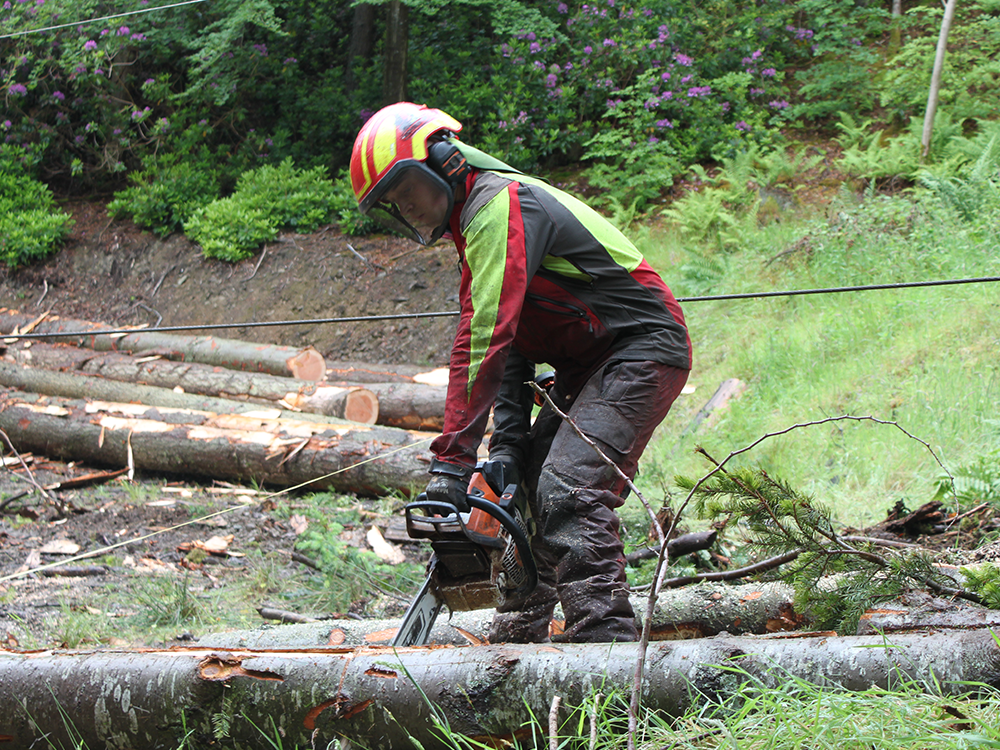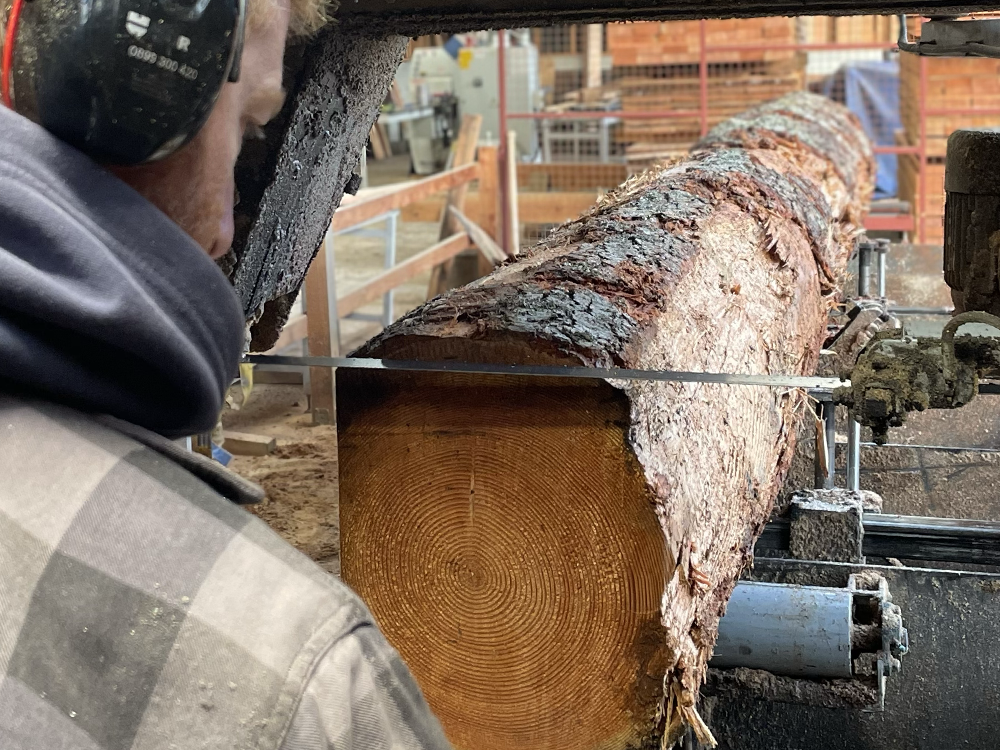
We are passionate about preserving our environment and protecting our natural habitats for current and future generations. With a rich bounty of high-quality materials on our doorstep, Scottish Timber is the natural choice for sustainable building.
At Caledonia Timber, we believe in keeping things simple – making the right choice should be an easy decision. Here are our 3 guiding principles for sustainable building:
Choose a sustainable material
By it’s nature, timber is a naturally sustainable material. Forests sequester carbon through the process of photosynthesis, where trees absorb carbon dioxide (CO2) from the atmosphere and store it as carbon in the mass of the tree and in forest soils. In Scotland, this process is particularly effective due to the large expanse of forested land, which covers over 1.3 million hectares, equating to about 16% of the total land area.
Our forests make the biggest contribution to the absorption of CO2 from the atmosphere, and carbon capture by Scottish forests accounts for 62% of all UK removals.
The type of forest and tree species significantly affect carbon sequestration rates. Faster-growing coniferous forests, rich in species such as Larch and Douglas Fir, can sequester carbon more quickly than slower-growing broadleaved species. Young forests are also particularly effective at sequestering carbon, as their rapid growth rates mean they absorb CO2 at a higher rate than mature forests, which may reach a carbon balance where the amount of CO2 absorbed is offset by the amount released through decay. This is why we promote the sustainable management of our forests to ensure continual re-planting and replenishment of the trees extracted.

Keep it local
About 80% of timber used in the UK is imported, primarily from Scandinavia, Canada and Russia. By using local timbers, felled only few miles from our yard, we can dramatically reduce the carbon footprint of the timbers used in any build. In transportation alone, locally sourced Scottish timber emits approximately 97.3% less CO2 /kg vs a globally imported equivalent.
Furthermore, this assumes that imported timber is comes directly from the country of origin into the UK. In reality, many alternatives to local Scottish cladding are shipped to multiple countries for processing before finally arriving in Scotland. At Caledonia Timber, we don’t believe this makes any sense, and can be completely avoided by utilising the high-quality natural products we have really available on our doorstep.

Take only what you need
We work with small-scale, local foresters who select and hand-fell timbers for processing in our sawmill. By using smaller, low-impact machinery, hand-felling greatly reduces the impact on the forest and surrounding areas, helping to promote forest regeneration. Also, by selecting the highest quality Larch and Douglas Fir trees, we are able to secure premium timbers up to a whopping 14m in length – perfect for structural beams and joists.

Our timbers are felled and extracted using small-scale machinery to minimise the impact on the forest and surrounding wildlife.

All timber is cut in our purpose-built sawmill in the heart of the Scottish Borders, only a few miles from the forest.
Find out more
To learn more about the sustainability of our timber processing or to discuss how our cladding, beams, decking or marine timbers could be used in your next project, please get in touch.